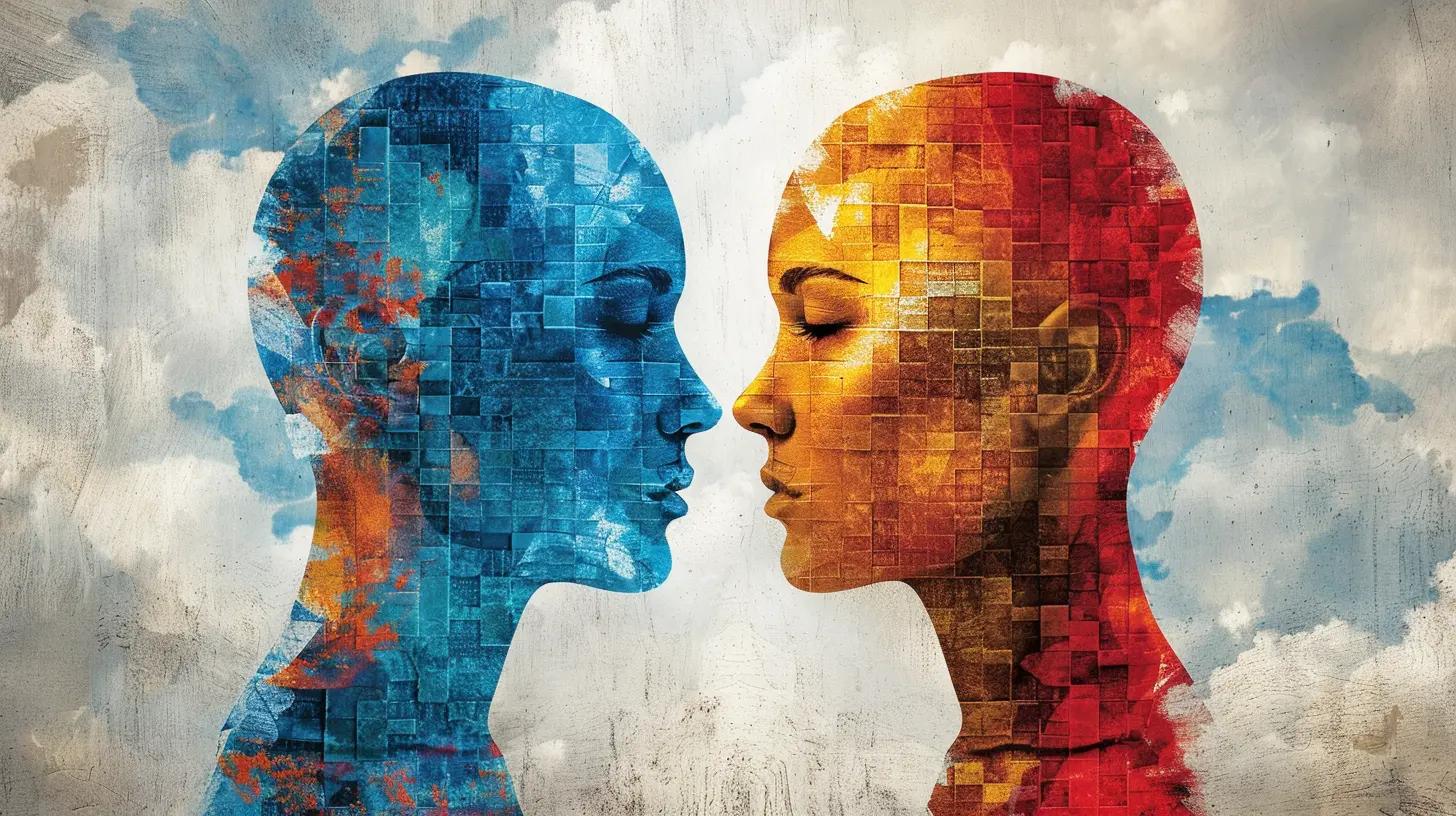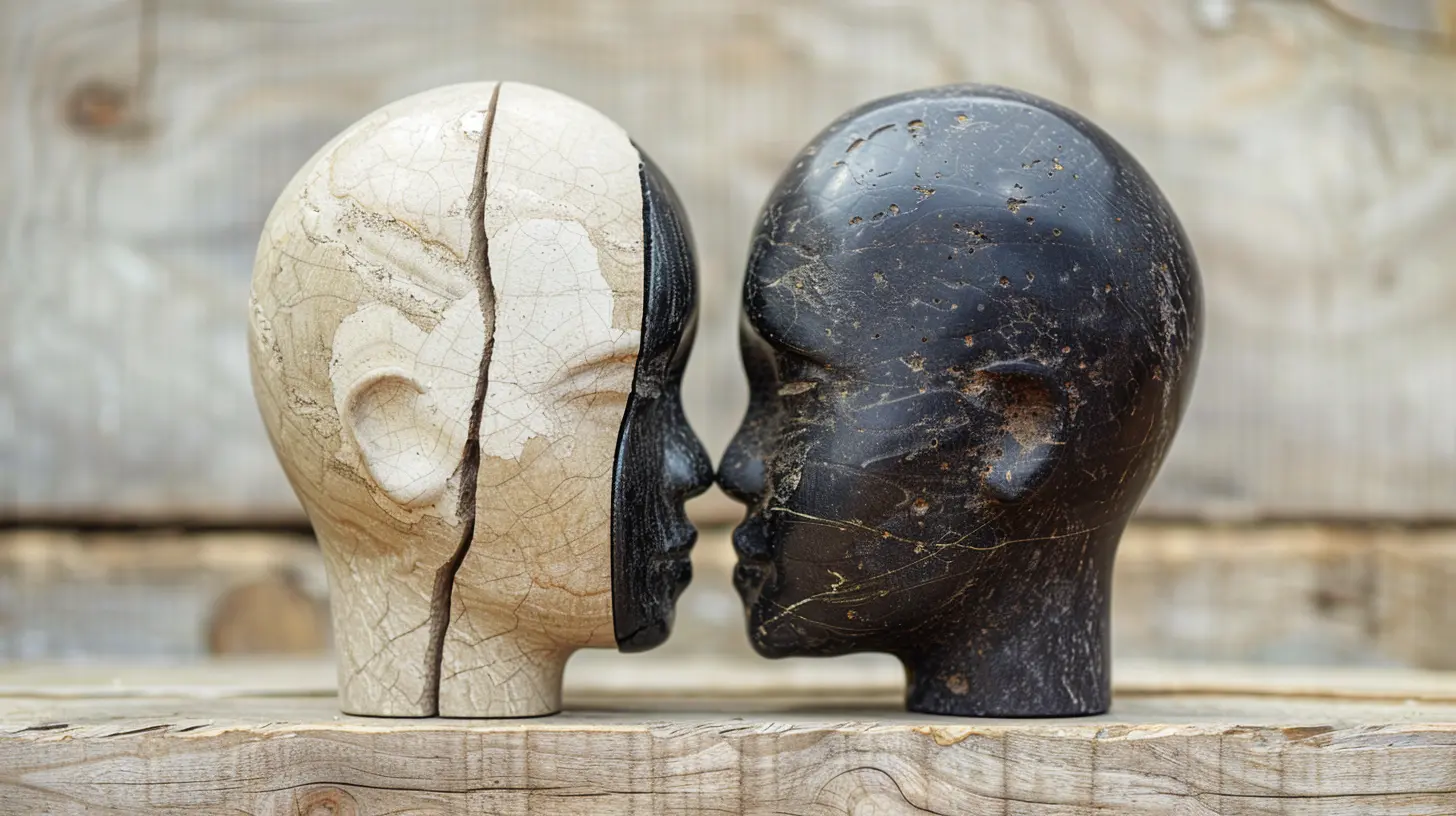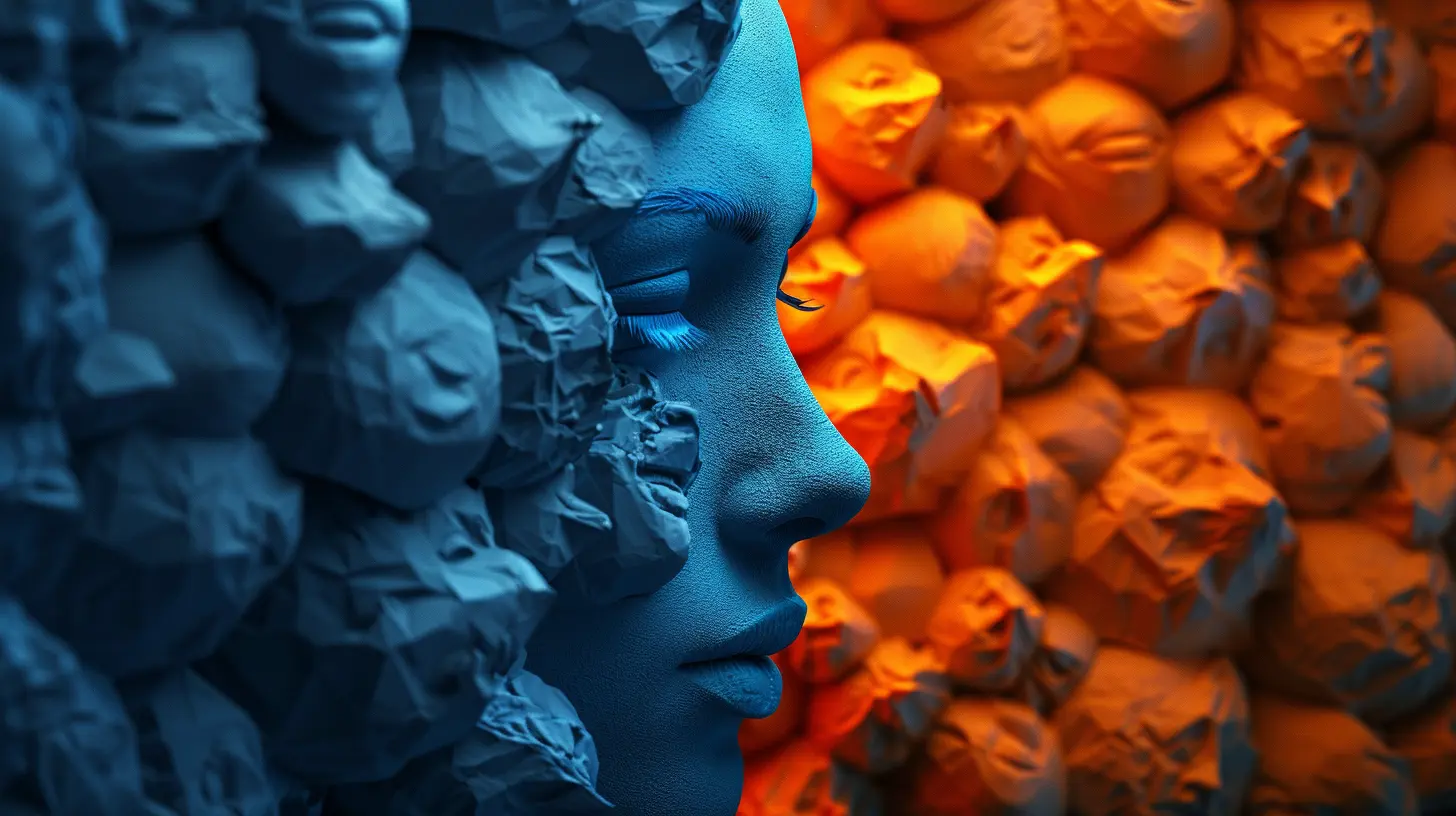How Cognitive Dissonance Drives Prejudice and Discrimination
22 August 2025
Have you ever felt that little mental itch when your beliefs don’t quite match your actions? That awkward tug-of-war in your brain where you’re like, “Wait, did I just contradict myself?” Welcome to the quirky, irrational world of cognitive dissonance! It's that psychological tension we get when we hold two conflicting thoughts at the same time.
Sounds harmless enough, right? But here’s the kicker—this little mental discomfort can actually be a big culprit behind prejudice and discrimination. Yep, that annoying brain static doesn't just stir internal conflict; it also warps our judgments about others in some pretty sneaky ways.
So grab a cup of coffee (or three), because we're diving deep into how cognitive dissonance fuels the not-so-glamorous side of human behavior.
What the Heck Is Cognitive Dissonance?
Let’s break it down without the psychobabble.Cognitive dissonance is the psychological stress you feel when your beliefs, values, or behaviors are in conflict. It's kind of like your brain trying to run two apps that don’t play nice together.
Example? Imagine you strongly believe in treating everyone equally but then laugh at a joke that's clearly offensive. That nagging guilt? That’s dissonance knocking at your mental door.
Do we love it? Absolutely not.
Do we try to fix it? Always. But—and here’s the juicy part—in trying to fix it, we sometimes pave the way to prejudice and discrimination. Cue dramatic music.
A Real-Life Scenario: Meet Sarah
Let’s talk about Sarah. She's a kind-hearted person who truly believes she's not prejudiced. But then, at work, she continually avoids collaborating with her colleague Jamal, who comes from a different cultural background.Why?
Because somewhere deep down, she's harboring an uncomfortable stereotype—but that stereotype totally clashes with her belief that she's open-minded.
So what does Sarah's brain do?
To reduce that uncomfortable feeling, her mind starts rationalizing. She might think, “It’s not about his background; he’s just not a team player.” Boom. That’s cognitive dissonance at work.
How Cognitive Dissonance Fuels Prejudice
Alright, so how does one psychological glitch lead us down the road to bias? Let’s unpack the process.1. The Brain Hates Conflict (Like, Really Hates It)
Our brains are wired for consistency—like a well-organized closet. Throw in a mismatched sock (a.k.a. a conflicting belief), and suddenly the entire wardrobe feels out of whack.So when we have biases that don’t line up with our morals, instead of admitting we're wrong (ha, that's scary), we change the narrative to fit the discomfort.
Instead of saying, “I have a stereotype,” we say stuff like:
- “They’re just not like us.”
- “I’m not racist, but…”
- “It’s just a joke.”
See the pattern?
2. Group Loyalty Overrules Objectivity
Humans are tribal by nature. We like hanging out with people who are like us. It makes us feel safe, validated, and—let’s face it—lazier in thinking.When we encounter someone from a different group, our unconscious brain (a sneaky little rascal) might shoot up red flags. If we’re not careful, we start justifying our actions to stay loyal to “our group.”
This "us vs. them" mentality is a breeding ground for stereotypes. And cognitive dissonance helps smooth over the internal contradictions.
3. Rationalization: A Double-Edged Sword
Here’s a spicy truth: We are world-class rationalizers.When our actions don't match our proclaimed values, we use mental gymnastics to bridge the gap. This might look like:
- Blaming the victim ("They brought it on themselves")
- Minimizing the offense ("It wasn't that big a deal")
- Justifying exclusion ("They wouldn’t fit in anyway")
Each rationalization chips away at equality while letting us sleep easy at night. That’s the sinister power of dissonance—it hides prejudice under layers of twisted logic.
Discrimination: Where Thought Turns to Action
Prejudice lives in the mind. Discrimination takes it into the world.Once our warped justifications (thanks again, cognitive dissonance!) settle in, they start influencing how we treat people. This is where things get dicey.
Biased Hiring Practices
You’ve probably heard of “unconscious bias” in hiring. People might truly believe they're hiring based on merit—but somehow, the job always goes to someone who looks or thinks just like them.Why? Because the discomfort of thinking "I might be biased" is glossed over by convenient logic like:
- “She just didn’t seem like a cultural fit.”
- “He had a different communication style.”
- “They wouldn’t align with the team.”
Spoiler alert: That “logic” is often just prejudice in a disguise so good it could win an Oscar.
Microaggressions: Death by a Thousand Cuts
Microaggressions—small, often unintentional slights—are the lovechild of cognitive dissonance and prejudice.People say things like:
- “You speak English so well!” (Wait, why wouldn't I?)
- “I don’t see color” (Cool, but that doesn’t erase racism)
Folks tossing out these lines may genuinely not intend harm. But when called out, instead of reflecting, they double down to ease dissonance.
- “I was just being nice!”
- “You're too sensitive!”
Their brains scramble to keep their “I’m a good person” narrative intact—even if it means invalidating someone else's experience.
Social Media: A Dissonance Playground
Now let’s talk digital.If cognitive dissonance were a sport, social media would be the Olympic stadium. Think about it—people preach tolerance in one tweet and then bash an opposing view in the next comment.
Why?
Because we curate online identities that reflect how we want to see ourselves, not necessarily how we actually behave.
And when someone calls us out? Oh boy, the rationalizations fly faster than replies in a Twitter feud. Dissonance is everywhere online, and it loves fueling our inner keyboard warrior.
So… How Do We Fix This?
Glad you asked, my inquisitive friend.1. Sit With the Discomfort
Yep, that yucky feeling when someone points out your bias? Don’t run from it. Sit with it like it's a DMV line—you’re not gonna like it, but you’ll get through it.2. Reflect, Don’t Defend
Instead of launching into defense mode (“I didn’t mean it!” “I’m not like that!”), try:- “Why did I think/say that?”
- “Where did this belief come from?”
- “How would I feel if that were said to me?”
Self-awareness turns dissonance from a trigger into a teacher.
3. Diversify Your Bubble
If your circle looks, thinks, and acts exactly like you—congrats, you’re living in an echo chamber. Pop that bubble.Interact with folks from different backgrounds. Listen to their stories. Real empathy breaks down prejudice faster than any viral TED Talk.
4. Normalize Changing Your Mind
Hot take: Evolving your beliefs is cool.Changing your mind doesn’t make you weak—it makes you wise. Only rocks stay the same forever, and even they erode eventually.
Final Thoughts: Cognitive Dissonance Isn’t the Villain—Avoidance Is
Cognitive dissonance is like mental indigestion. It’s uncomfortable, but it’s not the real problem—the way we respond to it is.When we ignore it or rationalize it away, we’re much more likely to reinforce harmful biases and push those biases into our behavior.
But if we acknowledge it, question it, and use it as a springboard for growth, it becomes our superpower for self-awareness.
So the next time your brain throws a fit because your actions don’t line up with your beliefs, don’t panic. Listen to it. Learn from it. Laugh at yourself a little. Because that discomfort? That’s the birthplace of real change.
all images in this post were generated using AI tools
Category:
Cognitive DissonanceAuthor:

Christine Carter
Discussion
rate this article
1 comments
Faelan Stone
Oh, fantastic! Just what I needed—another reason to feel guilty about my biases. Because clearly, my brain not being a fan of contradiction wasn't enough!
August 26, 2025 at 5:00 AM

Christine Carter
I appreciate your honesty! Recognizing biases is the first step towards understanding and overcoming them.


